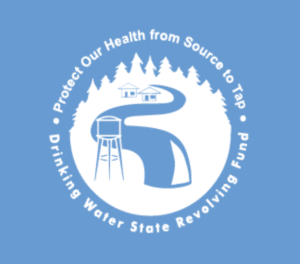3 New Factsheets on DWSRF Eligibilities & Upcoming Webinar
This week, EPA released three new sets of fact sheets and case studies on DWSRF eligibilities. These documents highlight ways that states and water systems may support cybersecurity measures, manage and leverage data, and protect source water with DWSRF funding. The data management and source water protection fact sheets also include case studies of states and communities utilizing DWSRF funding for these purposes.

- Cybersecurity
- The loan fund can fund the installation of cyber-related infrastructure, which may include upgrading information technology and operational technology.
- The set-asides can conduct assessments and to develop improvement plans and emergency response strategies.
- Managing and Leveraging Data
- The Admin set-aside can be used to build financial modeling tools that accurately predict the revolving fund’s cash availability over time, maximizing a state’s lending capacity.
- Set-aside funding can be used for an array of activities related to migrating, maintaining, and updating the state’s Safe Drinking Water Information System (SDWIS) data system.
- The loan fund can be used by water systems to develop and update asset management programs. The set-asides can also be used by the state for asset management-related activities, including training, technical assistance, and program development.
- Source Water Protection
- Statutory changes from America’s Water Infrastructure Act (AWIA) of 2018 expanded SWP-related eligibilities under the DWSRF set-asides.
- Examples of activities that can be supported by the Local Assistance set-aside include: Updating source water assessments, Developing and implementing SWP plans, Land acquisition and conservation easements, Well abandonment, Cover crops and other best management practices, Building fences to protect water sources, Septic system surveys and replacement, Outreach and education, and Development of local ordinances to protect source waters.
- Set-aside funds can help not only through direct action, but also coordination with other programs (e.g., the CWSRF and the CWA 319 program) charged with protecting and improving freshwater resources and public health.
All of the documents are accessible online on the EPA Fact Sheets and Reports page: https://www.epa.gov/drinkingwatersrf/reports-and-fact-sheets-about-drinking-water-state-revolving-fund-dwsrf.
Additionally, EPA is hosting a webinar on October 29th on Funding Opportunities through EPA’s Drinking Water Program. The webinar will provide highlights and updates on the DWSRF and EPA’s Assistance for Small and Disadvantaged Communities Drinking Water Grant. You can find more information and register for the webinar here: https://www.epa.gov/water-research/small-systems-monthly-webinar-series

